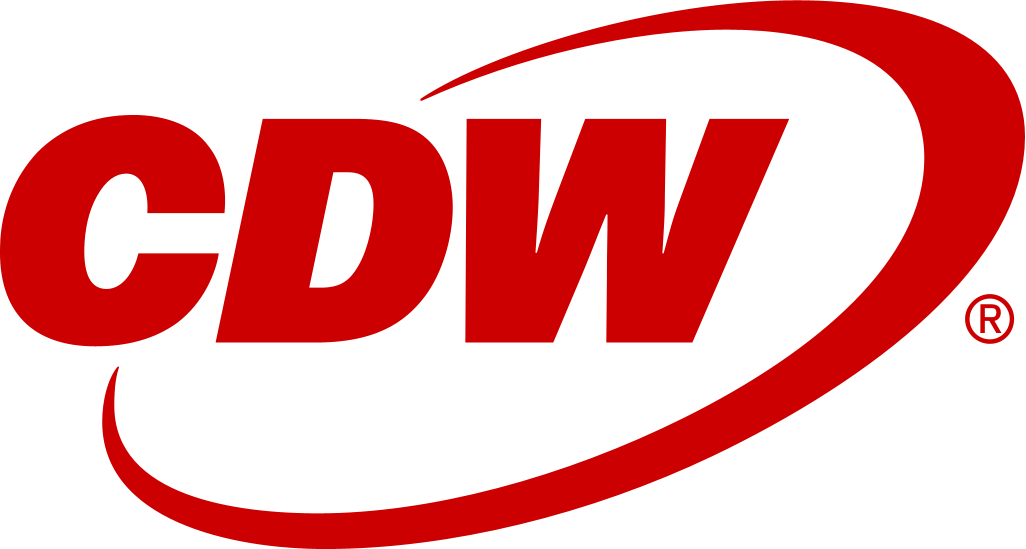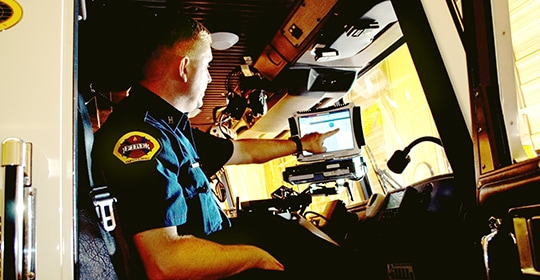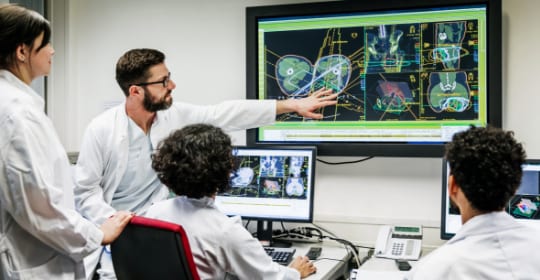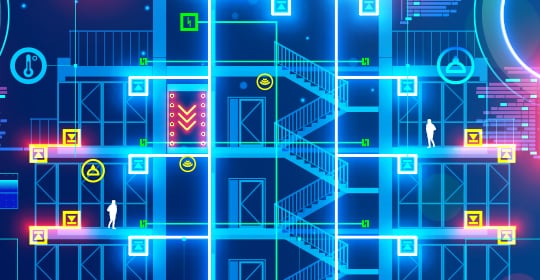Research everything IT
1 - 24 of 182
Sort By:
View:
Mar 25, 2024
Networking
As Higher Education Evolves, Institutions Should Engage Stakeholders Differently
Article
3 min
Vendor partnerships and cross-campus support can help IT leaders achieve high-priority objectives.
Feb 27, 2024
Networking
How to Bolster Your School’s Network Architecture to Keep Up With Future Growth
Article
3 min
Is your network architecture prepared to meet the requirements of emerging endpoints? Uncover key considerations for ensuring that your school's network architecture can accommodate ever-growing demands and operate with optimal efficiency.
Feb 05, 2024
Networking
In Wi-Fi, Sometimes Less Is More
Article
6 min
The history of broadcast radio has taught us that radio communications are complex in unexpected ways, and that designers and engineers must account for the slightest nuances when deploying and maintaining wireless communication networks.
Dec 22, 2023
Networking
Wi-Fi 6E and the Future of Networking
Article
4 min
Wi-Fi 6E marks a pivotal shift for networks, addressing future needs with its 6Ghz spectrum. Despite a higher upfront cost, the investment in your organization’s infrastructure now futureproofs you for the arrival of Wi-Fi 7 and 8.
Dec 13, 2023
Networking
Accelerating K–12 Digital Transformation Through the Network
Article
3 min
School network improvements can transform the education landscape, empower teachers and put dollars back in the district budget.
Dec 11, 2023
Networking
Driving DEI Initiatives Through Infrastructure Modernization
Use Case
4 min
Learn how one CDW customer upgraded their network infrastructure while supporting their company’s diversity, equity and inclusion goals.
Nov 28, 2023
Networking
Overcome Wireless Networking Challenges with Next-Level 5G Connectivity
Article
3 min
As the demand for 5G skyrockets, discover how 5G empowers organizations to enhance productivity and drive innovation.
Oct 02, 2023
Networking
4 Ways to Ensure Reliable Connectivity for Mobile Devices
Article
3 min
By implementing best practices to optimize mobile device connectivity, organizations can improve the user experience and attain the functionality needed in today’s connected world.
Sep 15, 2023
Networking
What Network Admins Should Look For in Network Management and Monitoring Tools
Article
3 min
Learn what factors to consider when evaluating network management and monitoring tools so you can make an informed decision that meets your organization’s business requirements.
Aug 25, 2023
Networking
IoT Technology is at the Cutting Edge of Emergency Services
Article
3 min
Emergency services are benefitting greatly from the capabilitities of Iot devices.
Aug 18, 2023
Networking
RFID vs. NFC: Which is Right for Your Business?
Use Case
4 min
RFID and NFC utilize similar technologies, but which is right for your business? Which solution is better for small businesses, and which is more suited for enterprise use?
Aug 18, 2023
Networking
This Year’s Wi-Fi Changes and What They Mean for Your Organization
Article
4 min
With its enhanced capabilities and unprecedented performance, Wi-Fi 6E can help ensure your organization has the seamless connectivity that is crucial for productivity, efficiency and innovation.
Jul 25, 2023
Networking
Ensure Digital Performance with Cisco ThousandEyes’ End-to-End Visibility
Article
3 min
Monitoring across clouds, networks, appliances and endpoints enables IT teams to quickly identify the source outages and other problems.
Jul 25, 2023
Networking
Protecting SCADA Networks in an Evolving Threat Landscape
White Paper
13 min
As cyberattacks become more frequent and sophisticated, organizations with SCADA networks must periodically update their environments to stay secure amid a threat landscape that continues to shift and expand.
Jun 29, 2023
Networking
Beyond Technical Skills: How Tech Recruiters Can Build a Winning Team
Article
3 min
Aligning hiring efforts with company culture and goals attracts top talent and ensures organizational continuity. Seasoned recruiters in the tech industry know how to get beneath the surface when interviewing candidates to ensure a good cultural fit.
Jun 20, 2023
Networking
What to Look For in an SD-WAN Solution
Article
3 min
Identify your organization’s business requirements before diving into an SD-WAN solution.
Apr 27, 2023
Networking
Is AI the Answer for Enhanced Operations and Services?
Use Case
3 min
Optimizing workflows with advanced infrastructure solutions is a healthy long-term strategy.
Apr 19, 2023
Networking
Are Aging Servers Hurting Your Workforce Productivity?
Use Case
3 min
Server optimization with managed services support can boost employee efficiency and productivity.
Mar 31, 2023
Networking
Connectivity Drives Data and Insights That Build Enterprise Intelligence
Article
3 min
Artificial intelligence and the Internet of Things help organizations increase efficiency while reducing costs.
Mar 24, 2023
Networking
Build an IT Infrastructure to Support Your Modern Public Library
Article
3 min
High-quality connectivity helps libraries bridge the digital divide and position themselves for funding resources.
Mar 17, 2023
Networking
5 Stages of a CDW Network Monitoring Engagement
Article
3 min
By working with CDW’s managed services team, organizations can offload network monitoring and turn their attention to strategic projects.
Mar 16, 2023
Networking
How Cisco’s Energy Networking Initiative Supports Sustainable Buildings
Article
3 min
Smart connectivity strategies reduce costs by enabling occupancy-based energy consumption.
Feb 02, 2023
Networking
Upgrading to Wi-Fi 6E? Consider These Design Issues
Article
5 min
There are several factors to keep in mind when adding 6 GHz to the Wi-Fi network.
Dec 31, 2022
Networking
Upgrading Aging Wireless Equipment to Enhance Customer Service
Case Study
2 min
A department store retailer migrated their aging wireless equipment to a new platform across 200 stores, optimizing customer service.
























